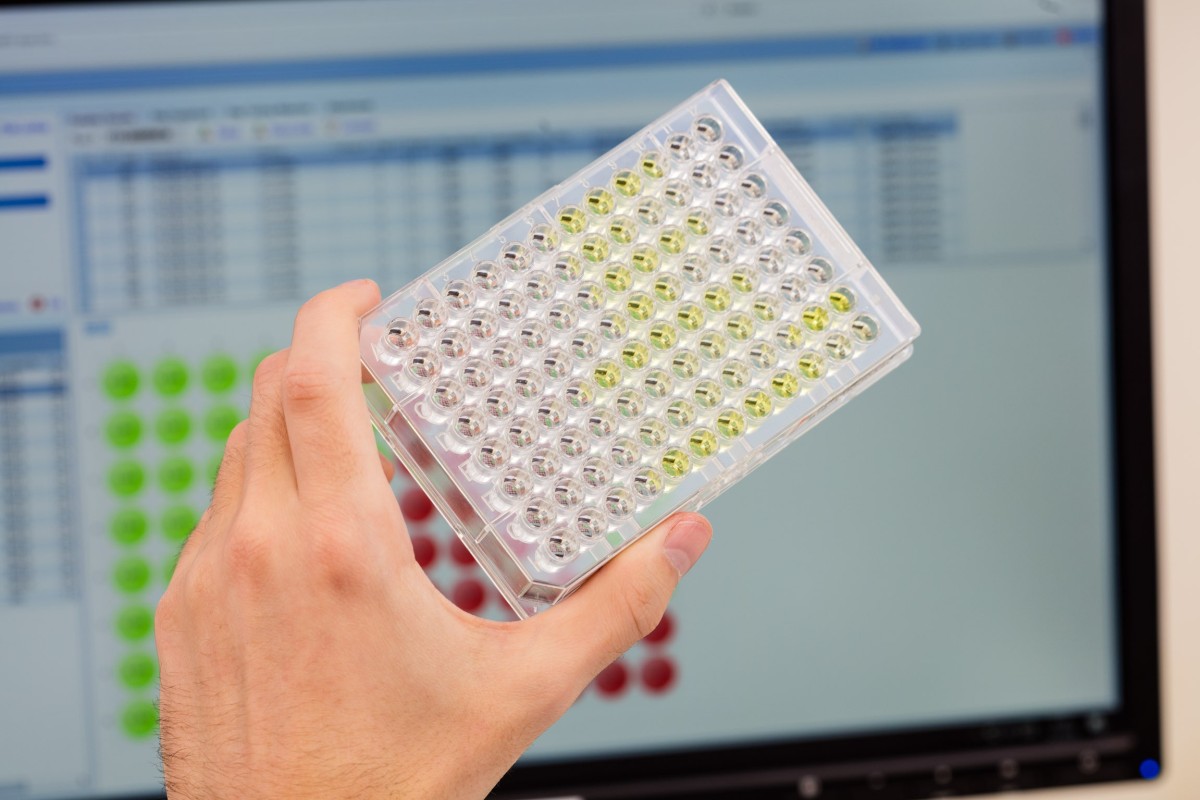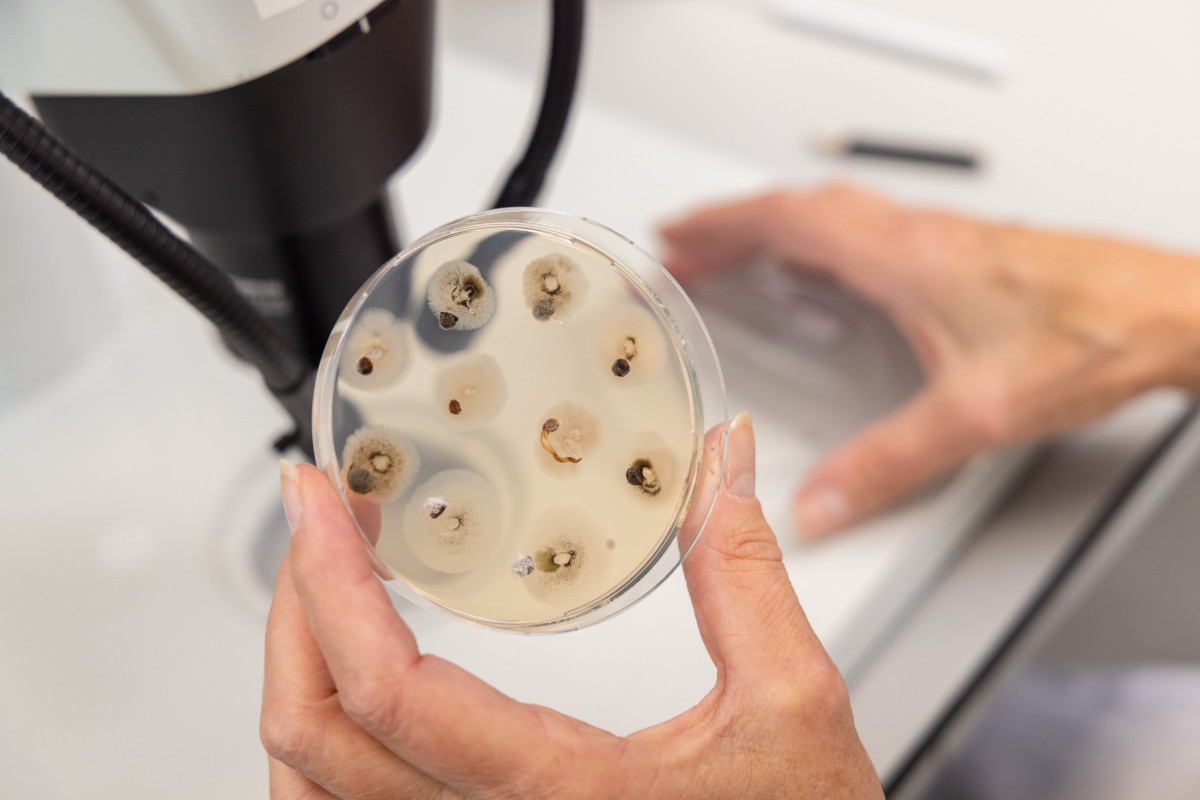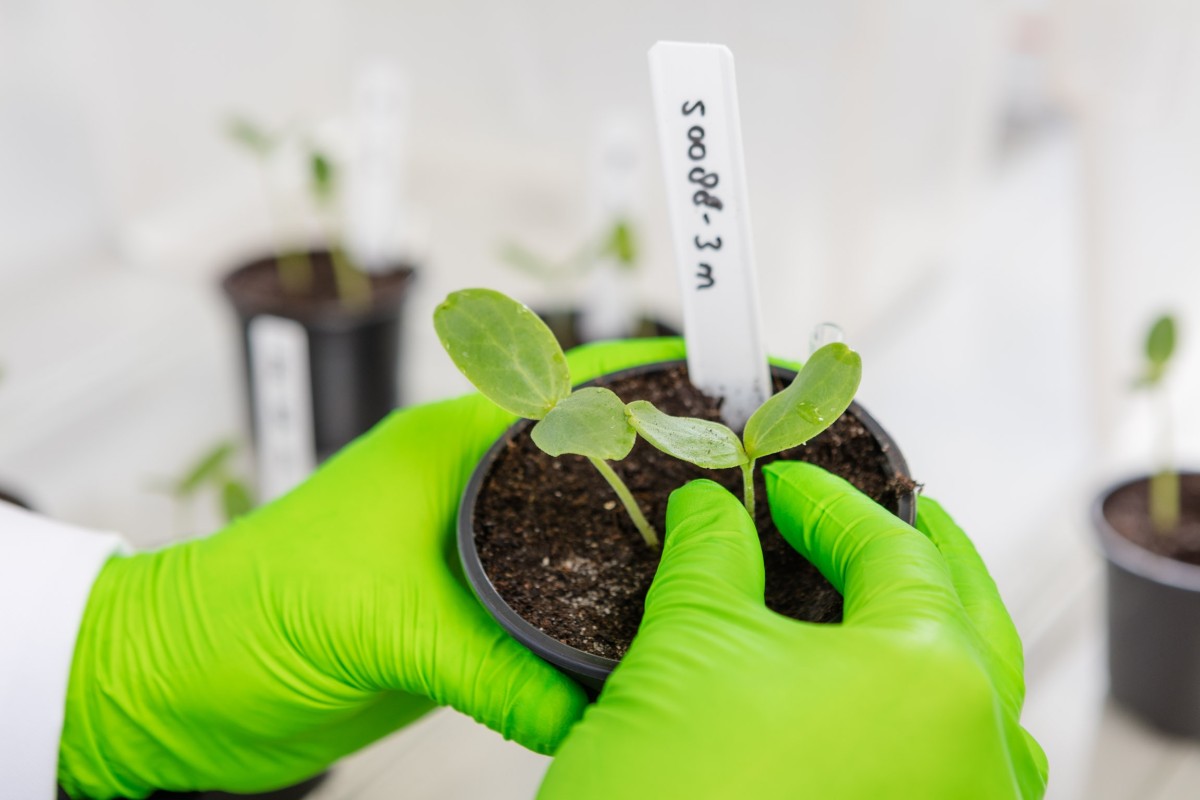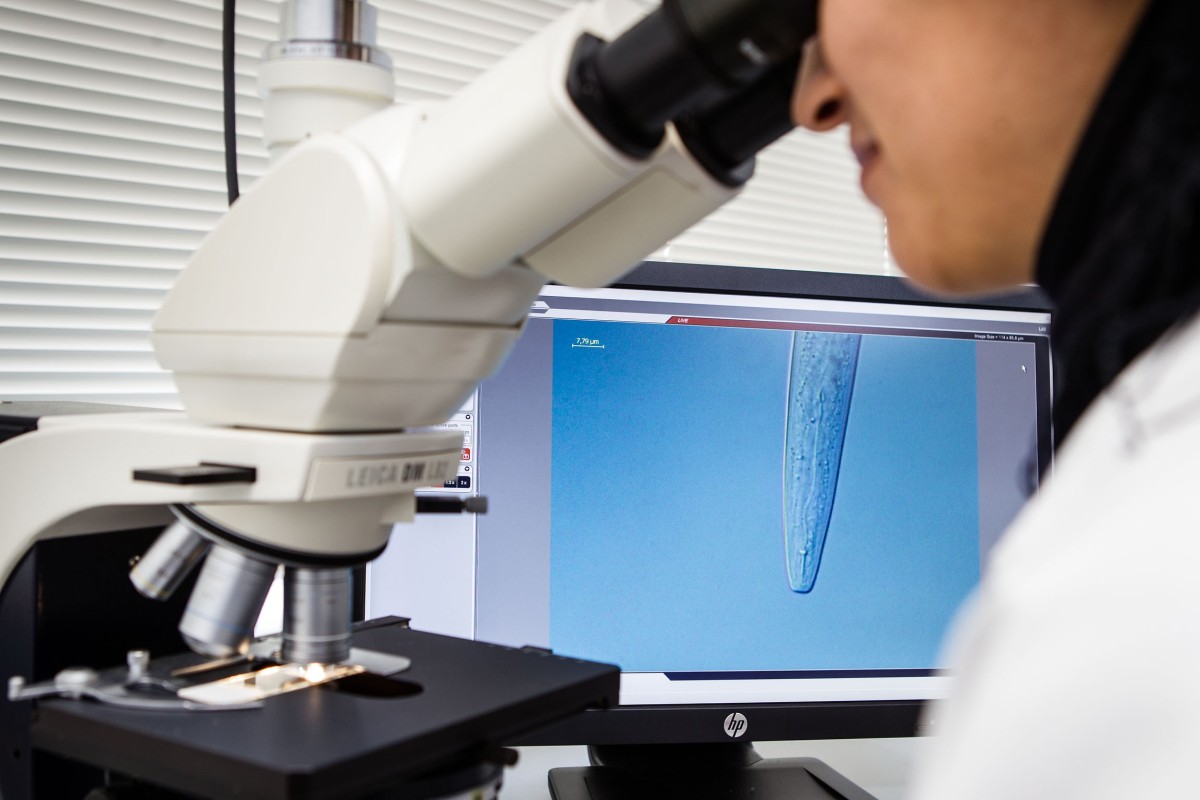
Virus & Viroïden
Naktuinbouw has a wide range of virus and viroid tests. Frequently used techniques are ELISA and PCR. We have an ELISA test available for about 70 viruses. Plant material can be tested for the presence of viruses, viroids or phytoplasmas using the latest molecular techniques.
Fungi
Testing for fungi is usually done by a plating method, combined with identification by microscope. New DNA techniques are used for sensitive detection of e.g. Fusarium species. Testing for fungi can also be done on soil samples, e.g. for Verticillium dahliae and Fusarium oxysporum f.sp. asparagi.


Bacteria
Seed and plant material can be tested for the presence of bacterial diseases and phytoplasms. Methods that are used are e.g., plating, pathogenicity tests and PCR.
Nematodes
Nematodes can seriously harm crops. Preventative testing of the soil, seeds and plant material can prevent this. Naktuinbouw offers testing for various plant-parasitic nematodes which may harm your crops. For example, the presence of Xiphinema and Longidorus species in soil may be demonstrated as part of the Elite certification procedure for strawberries.
Onion sets, or seed, can only be marketed if accompanied by a statement that the onion sets or the seed in question are free from stem nematode (Ditylenchus dipsaci). Other crops also require a statement that they are free from nematode when exported to certain destinations. Naktuinbouw can help you with this.

Frequently asked questions (FAQ)
Where can I find out how big my seed sample needs to be?
You can find this in the Price list Laboratories 2024 on our website behind the relevant button.
Where can I find out which tests you can perform on my crop?
You will find our current portfolio in the Price list Laboratories 2023. For vegetable crops, which tests we can perform is stated per crop. For plant material, a separate chapter lists which tests are available.
Do you have any questions?
Please contact the Support team of the laboratory: laboratoria@naktuinbouw.nl.
Can I also have tissue propagation material tested for pathogens?
All our tests have been validated on in-vivo material. Depending on the testing technique used, in-vitro material can also be tested. The PCR technique is very sensitive and can generally be used. The ELISA technique is less robust and is not recommended. Preferably have the propagating material tested. Alternatively, again later when the plants have been in the greenhouse for a few weeks.
What type of material do I need for virus testing on plant material?
Virus testing requires young, fully-grown leaves.
Where can I find out which plant material I should have tested for various pathogens?
You can find this in the Price list Laboratories 2024 on our website under the desired test.
Which plant material should be submitted if the plants show symptoms?
- Take samples from a place where the new symptoms are visible. Running laboratory tests on dead plants is not always possible.
- Take a sample before any crop protection products are applied. Crop protection products can destroy or mask the symptoms caused by pathogens and interfere with the laboratory tests
- If the symptoms are unclear, submit the entire plant.
- If symptoms are unclear or if the plants are uncommon, submit part of a healthy specimen. Pack the healthy sample separately. Indicate that it is healthy material on the label.
- Prevent leaves and flowers being contaminated by soil or substrate sent with the sample. Place a separate plastic bag around the roots and seal with an elastic band around the stem.
- Pack the entire sample in paper to prevent dehydration and rotting. Paper will regulate the moisture content in the plastic bag.
How do I know how many plants I should sample for export?
For export, an inspector often arranges the sampling. You can send an email to planning@naktuinbouw.nl. They can tell you exactly what you need to do.
What is the difference between disinfected and treated seeds?
- Disinfected seeds carry residues to a greater or lesser extent. The most obvious example is seeds coated with crop protection agents. The aim is to remove as much fungi and / or bacteria from the seeds as possible. These products may potentially influence the tests.
- Treated (disinfected) seeds do not contain any residues. Examples include warm water treatment or treatment with TSP or HCl. These products are not expected to affect the tests.
Can I also have disinfected/coated seeds tested?
The tests used for seed health have been developed and validated for untreated seeds. Seed treatments can affect the reliability of the health test results. For this reason, preferably submit untreated seed samples. If there is an express wish/necessity to test treated seeds, a comment on the certificate will state that the test has only been validated on untreated seeds.
This is not applicable to tests that explicitly state that the test is performed on treated seed. Please state the type of seed treatment applied when submitting the sample.
This plays a less important role with quality tests (germination power, purity etc.).
Can I also have primed seeds tested?
The tests used for seed health have been developed and validated for untreated seeds. Seed treatments can affect the reliability of the health test results. For this reason, preferably submit untreated seed samples. This especially applies to tests performed using a culture method. The number of microorganisms in the seed increases sharply during the priming process. These additional microorganisms in the seed disrupt the test to such an extent that, even after additional disinfection after priming, no assessable results can be obtained.
This plays a less important role with quality tests (germination power, purity etc.).
Can Naktuinbouw disinfect the seeds before a health test?
Unfortunately there are two reasons that prevent this:
- Naktuinbouw has no facilities for the application of disinfectants, other than those necessary to perform the test.
- If a sample is disinfected, it is no longer the actual sample that was submitted. As such, it is no longer representative of the lot from which the sample was taken.
Can samples disinfected with Thiram be sent in for laboratory testing?
We are only allowed to receive and test the samples if seed lots have been treated with Thiram and are going to countries outside the EU.
Can samples be returned?
Samples intended for health tests cannot be returned. First of all, these samples are tested destructively. After testing, the samples are no longer usable. Secondly, they are in a contained area. The samples are not allowed to leave this area.
